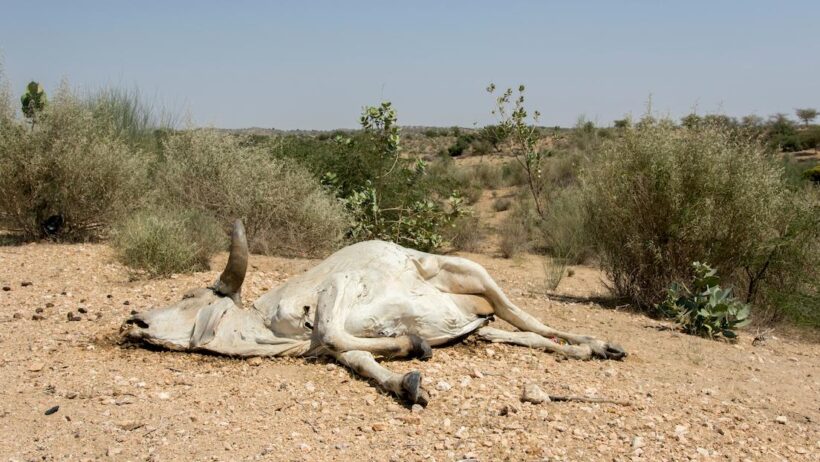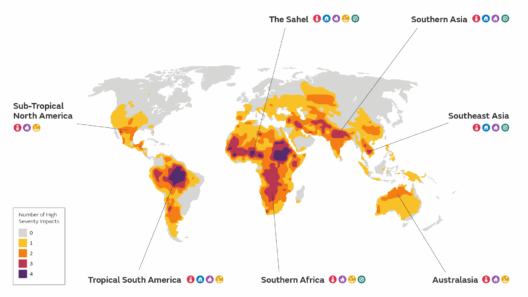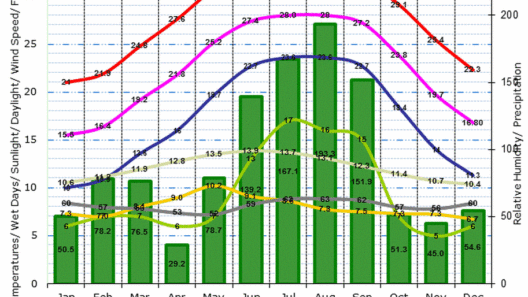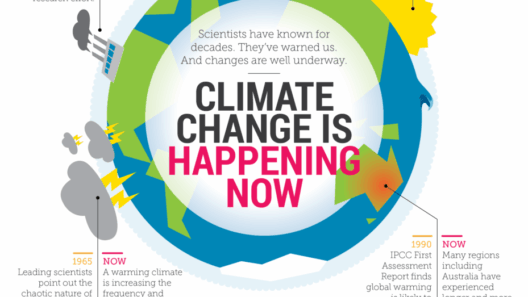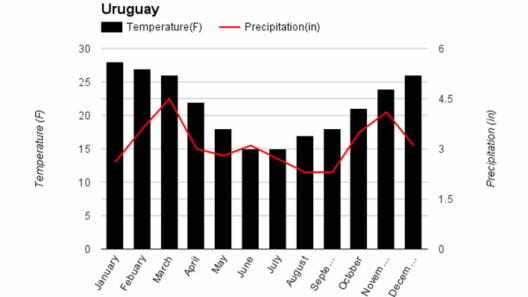Waves of change are rolling across our planet, and none appear more foreboding than those that plague the world’s oceans. The seas, which have long been regarded as resilient buffers for climate variations, are now starting to exhibit concerning symptoms of distress. As we delve into this phenomenon, it is crucial to understand how climate disruption wreaks havoc upon marine ecosystems, coastal communities, and the broader planetary balance.
The intricate tapestry of oceanic life is under siege. As global temperatures continue to rise due to anthropogenic greenhouse gas emissions, oceans absorb nearly a third of carbon dioxide released into the atmosphere. This absorption leads to ocean acidification, significantly altering the chemical composition of seawater. The decrease in pH levels endangers calcifying organisms, such as corals and shellfish, which struggle to form their calcium carbonate structures. Consequently, entire ecosystems that rely on these foundational species face an existential crisis.
Coral reefs, often referred to as the “rainforests of the sea,” are emblematic of this plight. Covering less than one percent of the ocean floor, these vibrant structures support approximately 25 percent of all marine species. Rising sea temperatures attributable to climate change are leading to widespread coral bleaching, a phenomenon where stressed corals expel their symbiotic algae (zooxanthellae). Without these algae, corals lose their color and, more importantly, their primary source of sustenance. The aftermath is a stark landscape of bleached bones devoid of life, highlighting the urgent need for climate action.
Moreover, the shifting thermal regime influences marine species distribution. Fish, crustaceans, and other marine organisms are adapting to warmer waters by migrating to cooler regions, often to depths or latitudes they’ve never inhabited before. This migration disrupts existing food webs and local fisheries, leading to economic ramifications for coastal communities that rely on traditional fishing practices. As fish stocks dwindle in their historic locations, competition intensifies, and fishermen face uncertainty in their livelihoods.
In tandem with these biological shifts, the phenomenon of sea-level rise poses an imminent threat to coastal habitats and human settlements. As glaciers and polar ice sheets melt, and as thermal expansion occurs due to warming waters, projections estimate that sea levels could rise by several feet by the end of this century. Low-lying areas are becoming increasingly vulnerable to catastrophic flooding, jeopardizing infrastructure, freshwater supplies, and even terrestrial ecosystems. Countries grappling with these changes must re-evaluate urban planning and disaster management approaches.
This alarming trajectory also amplifies the frequency and intensity of extreme weather events. Hurricanes, typhoons, and cyclones, fueled by warmer sea surface temperatures, unleash devastation with greater ferocity. The interplay between climate change and oceanic conditions has transformed once predictable weather patterns into a volatile and unpredictable reality. Such alterations threaten not only natural habitats but also human health and safety.
Understanding oceanic disruption compels attention to the interplay between marine environments and human activities. Industrial pollution, plastic waste, and overfishing compound the effects of climate change, leading to a quagmire of challenges. Plastic debris in oceans creates a double jeopardy, with marine animals ingesting toxins and becoming entangled in waste. This not only affects the creatures themselves but can also permeate the food chain and ultimately impact human consumption of seafood.
As the societal ramifications of a changing ocean unfold, there emerges a pressing need for innovative solutions. Global initiatives aimed at reducing carbon emissions, enhancing marine protected areas, and promoting sustainable fisheries practices are vital components of the response to this crisis. The shift in perspective must embrace a collaborative multifaceted approach that includes not only scientists and policymakers but also local communities and indigenous populations whose traditional knowledge can guide adaptive strategies.
Furthermore, the development of technologies aimed at monitoring ocean health—such as remote sensing and marine robotics—opens new avenues for conservation and research. Engaging local communities in citizen science projects can foster a sense of stewardship, allowing individuals to participate actively in the preservation of their marine environments. This confluence of technology and grassroots activism represents a beacon of hope amidst an otherwise daunting scenario.
Amidst these numerous challenges, we must also highlight the resilience of nature. Some marine organisms are displaying adaptive capabilities that defy expectations, indicating potential avenues for recovery if provided adequate protection from human-induced stressors. The mysteries of how life can persist and adapt in the face of adversity should pique curiosity and inspire a communal commitment to action.
Ultimately, the narrative surrounding our seas is one of interconnectedness. The health of the oceans is inextricably linked to the health of the entire planet. Understanding that the fate of marine ecosystems has profound implications for global biodiversity, food security, and climate stability fosters a sense of collective responsibility. As waves of change continue to unfold, it is incumbent upon us to adopt a transformative mindset—one that prioritizes ecological integrity and sustainability for future generations. Investing in the protection of oceanic resources, challenging harmful practices, and advocating for forward-thinking policies can forge a path toward a healthier, more resilient planet.
In conclusion, the turbulent waters of climate disruption beckon a reexamination of our relationship with the oceans. Through education, innovation, and collaboration, we have the power to effectuate positive change. Let us embrace curiosity, engage with complexity, and take decisive action to safeguard our seas before the tides of change render them irreparably altered.



